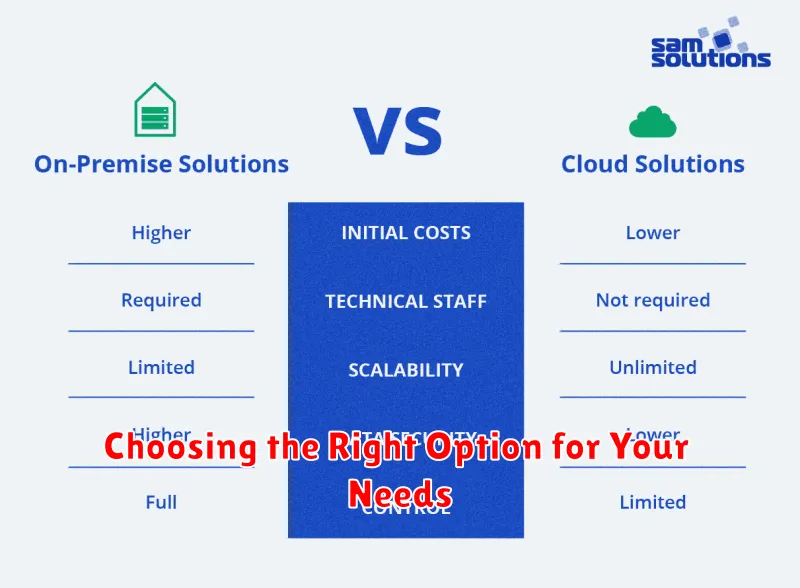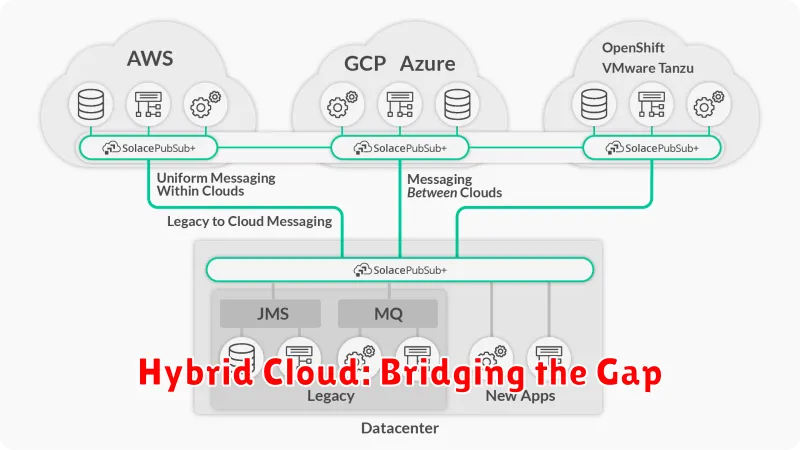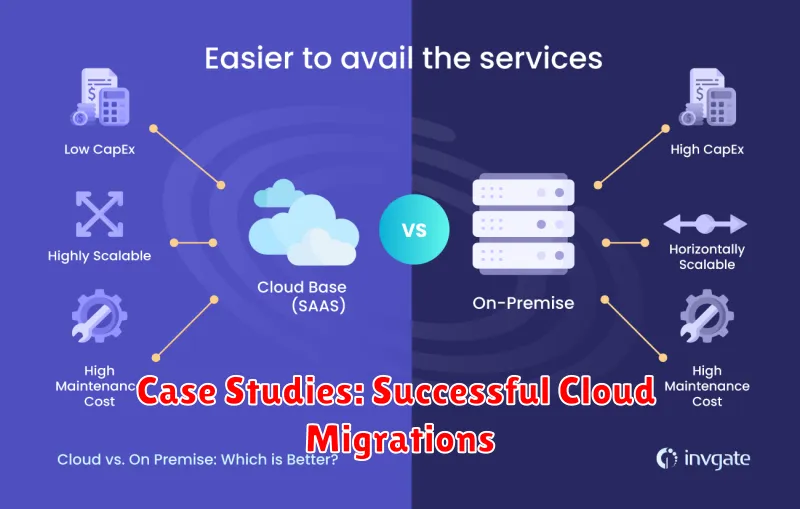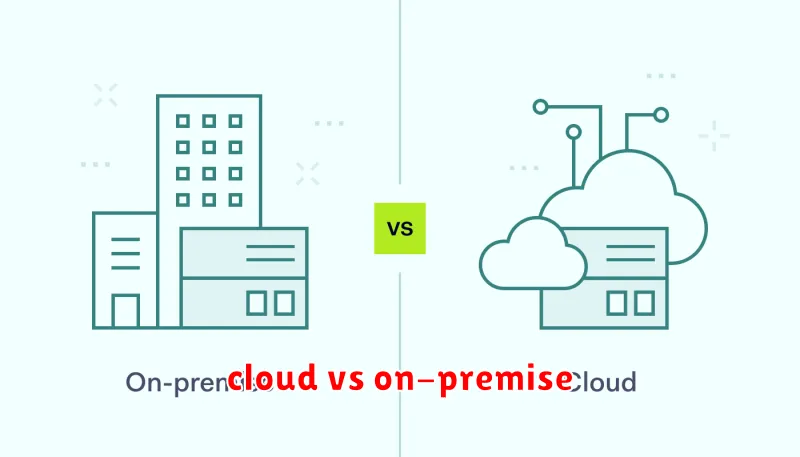In today’s rapidly evolving business landscape, choosing the right IT infrastructure is crucial for achieving success. Two primary options stand out: cloud computing and traditional IT. Each approach offers unique advantages and disadvantages, making it essential for businesses to carefully consider their specific needs and goals. This article will delve into the key differences between cloud and traditional IT, empowering you to make an informed decision that aligns with your business objectives.
Whether you’re a small startup or a large enterprise, understanding the nuances of cloud vs. traditional IT can significantly impact your agility, scalability, cost-effectiveness, and overall operational efficiency. By exploring the pros and cons of each approach, this guide will provide valuable insights to help you determine the most suitable IT infrastructure for your organization. Join us as we navigate the complexities of cloud and traditional IT, empowering you to make the right choice for your business’s future.
Understanding Traditional IT Infrastructure
Traditional IT infrastructure, also known as on-premises IT, refers to the physical hardware and software that businesses own and manage themselves. This includes servers, storage devices, network equipment, and applications that are located within the company’s own data center or office. In contrast to cloud computing, businesses with traditional IT infrastructure bear the responsibility for all aspects of their IT operations, including:
- Purchasing and maintaining hardware: This involves acquiring and keeping servers, storage devices, and other equipment in good working order, which can be a significant financial investment.
- Managing software licenses: Businesses must track and manage software licenses for all applications they use, which can become complex for larger organizations.
- Securing the infrastructure: Protecting the physical hardware and data from security threats is crucial, and businesses must implement robust security measures and maintain them.
- Monitoring and troubleshooting: 24/7 monitoring of IT systems is essential to ensure they are running smoothly and to identify and resolve any issues that arise.
- Scaling the infrastructure: Meeting changing business demands requires expanding or shrinking IT resources, which can be a lengthy and costly process with traditional IT.
While traditional IT infrastructure has traditionally been the preferred choice for businesses due to its perceived security and control benefits, it comes with several drawbacks, including high upfront costs, limited scalability, and ongoing maintenance burdens. These factors have led many organizations to explore cloud-based solutions as a more agile and cost-effective alternative.
Introduction to Cloud Computing Models
In the digital age, businesses are constantly seeking ways to enhance their operations and stay competitive. One crucial aspect of this pursuit is finding the right IT infrastructure. Traditionally, companies relied on on-premises solutions, where hardware and software were housed within their own data centers. However, the rise of cloud computing has revolutionized the way organizations approach IT, offering numerous benefits and flexibility.
Cloud computing involves delivering computing services – including servers, storage, databases, networking, software, analytics, and intelligence – over the internet. This approach eliminates the need for on-premises infrastructure, allowing businesses to access resources on demand. There are three primary cloud computing models, each catering to different needs and preferences:
1. Infrastructure as a Service (IaaS)
IaaS provides access to fundamental computing resources, such as servers, virtual machines, storage, and networking. Think of it as renting a server or a data center. You have full control over the operating system, applications, and data, while the cloud provider manages the underlying infrastructure.
2. Platform as a Service (PaaS)
PaaS goes beyond infrastructure, offering a complete development platform. It includes tools for building, running, and managing applications, along with middleware, databases, and other development services. PaaS simplifies application development and deployment, allowing developers to focus on building applications rather than managing the underlying infrastructure.
3. Software as a Service (SaaS)
SaaS delivers software applications over the internet. Instead of installing and maintaining software on local devices, users access applications through web browsers or mobile apps. SaaS providers handle all aspects of software management, including updates, security, and maintenance, providing a convenient and cost-effective solution.
Key Differences: Cloud vs. On-Premises
The traditional approach to IT infrastructure, known as “on-premises,” involves businesses owning and maintaining their own hardware and software. In contrast, cloud computing leverages third-party providers for server space, storage, databases, networking, software, analytics, and more.
Here’s a breakdown of key differences between cloud and on-premises deployments:
Ownership and Maintenance
On-premises solutions require businesses to own and manage their hardware and software, while cloud solutions shift that responsibility to the provider. This means that cloud users can focus on their core business activities, while the provider handles the technical aspects of the infrastructure.
Scalability
Cloud computing offers unparalleled scalability, enabling businesses to adjust their resources up or down based on demand. On-premises solutions, on the other hand, require significant upfront investments and can be difficult to scale quickly.
Cost
Cloud solutions typically operate on a pay-as-you-go model, allowing businesses to only pay for the resources they consume. This can be more cost-effective than the significant upfront investments required for on-premises solutions. However, costs can escalate if usage exceeds expectations.
Security
Security is a critical concern for both cloud and on-premises solutions. While cloud providers invest heavily in security measures, businesses must carefully assess their security requirements and ensure that the provider meets their specific needs.
Flexibility
Cloud computing offers greater flexibility, allowing businesses to access resources and applications from anywhere, anytime. This can be particularly beneficial for remote teams and businesses with a global presence. On-premises solutions are typically more rigid and require physical access to the hardware.
The choice between cloud and on-premises solutions depends on a variety of factors, including budget, scalability requirements, security concerns, and IT expertise. It’s important to carefully consider these factors before making a decision.
Cost Comparison: Cloud vs. Traditional IT
Choosing between cloud and traditional IT for your business can be a tough decision, and cost is a major factor to consider. Let’s break down the key cost differences:
Traditional IT typically involves upfront capital expenditure (CAPEX) for hardware, software, and infrastructure. You’ll also need to pay ongoing operational expenses (OPEX) for maintenance, support, and staff. These costs can be substantial and unpredictable, with potential for costly upgrades and downtime.
Cloud computing offers a subscription-based model, shifting CAPEX to OPEX. You pay for what you use, with predictable monthly bills. This eliminates the need for large upfront investments and allows you to scale resources up or down as needed.
Here’s a breakdown of some key cost areas:
- Hardware: Cloud services eliminate hardware costs, while traditional IT requires significant upfront investment and ongoing maintenance.
- Software: Cloud providers typically offer software as a service (SaaS) with monthly subscriptions, reducing the need for large upfront software purchases and licensing.
- Personnel: Traditional IT demands a dedicated IT staff, while cloud services often require less in-house expertise, as providers handle maintenance and security.
- Security: Cloud providers invest heavily in security, offering robust measures that may be difficult and expensive to implement in-house.
- Scalability: Cloud solutions offer flexible scaling, allowing you to adjust resources easily based on demand. Traditional IT requires significant investments for scaling, potentially leading to overspending or resource constraints.
While cloud services may seem more expensive at first glance, the long-term benefits of cost predictability, scalability, and reduced overhead can significantly outweigh the initial expenses. By carefully evaluating your business needs and comparing pricing models, you can determine the most cost-effective solution for your company.
Scalability and Flexibility: Cloud vs. On-Premises
When considering the best IT infrastructure for your business, scalability and flexibility are crucial factors to weigh. Both cloud and on-premises solutions offer unique advantages in these areas, making it essential to understand their differences to make an informed decision.
Cloud solutions excel in scalability, allowing businesses to effortlessly adjust resources up or down based on fluctuating demand. This dynamic approach means you only pay for what you use, avoiding unnecessary expenses associated with overprovisioning. Additionally, cloud providers handle infrastructure management, enabling rapid scaling without the need for extensive on-site hardware upgrades or IT personnel.
Conversely, on-premises solutions offer a higher level of control over your infrastructure. This means you have complete control over hardware, software, and security settings. However, scaling on-premises infrastructure requires significant upfront investments, including purchasing hardware and software licenses. Moreover, managing physical servers, software updates, and security measures can be time-consuming and resource-intensive.
In terms of flexibility, cloud solutions provide superior agility. With cloud, businesses can easily adapt to changing requirements, rapidly deploy new applications, and access a wide range of services on demand. This flexibility is particularly valuable for organizations dealing with dynamic business environments or rapid growth.
While on-premises solutions offer control, they often lack the adaptability of cloud offerings. Deploying new applications and scaling resources can be complex and time-consuming, potentially hindering your business’s ability to react quickly to market changes or seize new opportunities.
Ultimately, the choice between cloud and on-premises depends on your business’s specific needs and priorities. If scalability, flexibility, and cost efficiency are paramount, cloud solutions are likely the best option. However, if you require complete control over your infrastructure, on-premises may be a better fit. Carefully assessing your business requirements and weighing the advantages and disadvantages of each approach will ensure you make the right choice for your IT infrastructure.
Security Considerations: Cloud vs. Traditional IT
When making the decision to move to the cloud or stay with traditional IT, security is a primary concern. While both options have their strengths and weaknesses, understanding the security considerations of each can help you make an informed decision for your business.
Traditional IT Security
With traditional IT, your company has complete control over its physical infrastructure, including servers, firewalls, and data storage. This gives you greater visibility and control over security, but it also requires significant investments in security personnel, hardware, and software.
Key advantages:
- Greater control over security measures
- More flexibility in customizing security policies
Key disadvantages:
- Higher upfront costs
- Greater responsibility for security maintenance
Cloud Security
Cloud providers offer a variety of security features, including data encryption, access controls, and threat monitoring. This can help you reduce your security burden and focus on your core business operations. However, you must carefully vet the cloud provider’s security practices and ensure they meet your needs.
Key advantages:
- Lower upfront costs
- Access to advanced security features
- Scalability and flexibility
Key disadvantages:
- Limited control over security measures
- Potential for data breaches if the cloud provider is compromised
- Potential reliance on third-party security audits
Conclusion
Ultimately, the best security solution for your business will depend on your specific needs and risk tolerance. Evaluating the pros and cons of both traditional IT and cloud security can help you make a decision that balances cost, security, and scalability.
Data Management and Control in the Cloud
One of the primary concerns for businesses considering a move to the cloud is data management and control. While the cloud offers numerous benefits, such as scalability, flexibility, and cost savings, it’s crucial to understand how data is managed and secured in this environment.
In a traditional IT setup, businesses have complete control over their data, infrastructure, and security. However, with cloud computing, this control is partially delegated to the cloud provider. This can be a point of apprehension for some businesses, but it’s important to remember that reputable cloud providers offer robust data management and security features.
Data Security is paramount in the cloud. Cloud providers invest heavily in physical and digital security measures, including data encryption, access control, and regular security audits. They are also responsible for protecting your data from threats like cyberattacks and data breaches.
Data Backup and Recovery are also important considerations. Cloud providers offer various backup and recovery options, ensuring your data is protected and can be restored quickly in case of an incident.
Data Governance and Compliance are essential for businesses operating in regulated industries. Cloud providers offer features and tools that help you meet compliance requirements, such as HIPAA for healthcare or GDPR for data privacy.
While cloud providers offer robust data management capabilities, it’s important to carefully review their service level agreements (SLAs) and understand their data security policies. You should also ensure you have a clear understanding of data ownership and access control.
Ultimately, the decision to move to the cloud depends on your specific business needs and priorities. However, with the right cloud provider and a clear understanding of data management and control, the cloud can offer a secure and efficient solution for your business.
Deployment Speed and Agility
When it comes to deploying new applications or updating existing ones, speed and agility are paramount. Businesses that can quickly adapt to changing market conditions and customer demands gain a competitive edge. This is where the fundamental differences between cloud and traditional IT become truly apparent.
Cloud computing offers unparalleled deployment speed. With cloud platforms, infrastructure provisioning, software installation, and configuration can be automated, significantly reducing deployment time. This means new applications can be rolled out quickly and updates can be applied seamlessly, allowing businesses to stay ahead of the curve.
Traditional IT, on the other hand, often involves a more complex and time-consuming deployment process. Physical hardware needs to be procured, installed, and configured, which can take weeks or even months. Software installations require extensive planning and coordination, and any changes require careful consideration to minimize disruption. This traditional approach can hinder agility, making it challenging to respond rapidly to evolving business needs.
The agility advantage of cloud extends beyond initial deployment. Cloud platforms enable businesses to scale resources up or down on demand, adapting to fluctuating workloads and traffic. This flexibility allows for rapid response to sudden changes in business requirements, ensuring that applications remain responsive and performant at all times.
In contrast, scaling resources in traditional IT environments can be a cumbersome process. It often requires purchasing additional hardware, which can be costly and time-consuming. This makes it difficult to handle sudden spikes in demand or adapt to changing business needs quickly.
Ultimately, the choice between cloud and traditional IT depends on your specific business requirements. If speed, agility, and scalability are critical factors for your success, cloud computing provides a clear advantage. However, if your organization has specific security or compliance needs that are not yet adequately addressed by cloud providers, traditional IT may still be the better option.
Business Continuity and Disaster Recovery
When it comes to business continuity and disaster recovery (BCDR), both cloud and traditional IT offer distinct advantages. Cloud solutions often provide robust and readily available BCDR capabilities, thanks to their inherent redundancy and scalability. Cloud providers can ensure data replication across multiple data centers, minimizing downtime in case of a disaster. They often offer automated backups and recovery tools, simplifying the restoration process.
On the other hand, traditional IT infrastructures might require more manual effort for BCDR planning and implementation. While on-premises data centers can offer a high degree of control, ensuring redundancy and disaster preparedness necessitates careful planning and investment in backup systems, disaster recovery sites, and related technologies. This can be a significant undertaking, particularly for smaller businesses.
The choice between cloud and traditional IT for BCDR depends heavily on your specific needs and resources. For businesses seeking cost-effective, scalable, and readily available solutions, the cloud might be a compelling option. However, organizations with stringent security requirements or a need for complete control over their infrastructure might prefer a traditional approach.
Choosing the Right Option for Your Needs

The decision of whether to stick with traditional IT or embrace the cloud can be daunting. Both options have their pros and cons, and the right choice ultimately depends on your specific business needs, budget, and technical expertise.
Traditional IT offers a high level of control and security, making it ideal for businesses with sensitive data or stringent regulatory requirements. It provides a predictable environment with known costs and reliable performance. However, it can be expensive to set up and maintain, requiring significant upfront investments in hardware, software, and skilled personnel.
Cloud computing, on the other hand, offers flexibility, scalability, and cost-effectiveness. You can pay only for what you use, eliminating the need for large upfront investments. It also allows for rapid deployment of new services and applications, adapting to changing business needs quickly.
Choosing the right option involves considering factors like:
- Budget: What are your upfront and ongoing costs for each option?
- Security: How secure are your data and applications in each environment?
- Scalability: Can the solution grow with your business needs?
- Flexibility: How easily can you adapt to changes in technology or business requirements?
- Expertise: Do you have the internal resources to manage and maintain the chosen solution?
Ultimately, the best choice depends on your individual circumstances. If you value control, security, and predictability, traditional IT might be the better option. If flexibility, cost-effectiveness, and scalability are your priorities, the cloud may be the way to go.
Hybrid Cloud: Bridging the Gap

In the ever-evolving landscape of technology, businesses face a crucial decision: embrace the cloud, stick with traditional IT, or find a middle ground. Hybrid cloud emerges as a compelling solution, bridging the gap between these two approaches by offering the best of both worlds.
Hybrid cloud allows organizations to leverage the benefits of public cloud services, such as scalability, agility, and cost-effectiveness, while retaining control over sensitive data and critical applications within their own on-premises infrastructure. This flexibility allows businesses to tailor their IT environment to their specific needs, optimizing resource allocation and maximizing operational efficiency.
One of the key advantages of hybrid cloud is its ability to seamlessly integrate public and private cloud resources. This seamless integration fosters a unified platform where data and applications can flow freely between environments, facilitating collaboration and enhancing data management capabilities. The ability to shift workloads between on-premises and cloud environments as needed provides unparalleled flexibility and allows businesses to react quickly to changing demands.
Furthermore, hybrid cloud offers a powerful solution for organizations with stringent data security and compliance requirements. By retaining control over sensitive data within their own infrastructure, businesses can ensure compliance with industry regulations and maintain a high level of security. At the same time, the flexibility of the cloud allows them to scale their infrastructure and access the latest technologies without compromising security.
In conclusion, hybrid cloud provides a compelling solution for businesses seeking to bridge the gap between traditional IT and the cloud. By offering the flexibility to integrate public and private cloud resources, enhance data management capabilities, and maintain control over sensitive data, hybrid cloud empowers organizations to optimize their IT environment, achieve operational efficiency, and drive innovation.
Case Studies: Successful Cloud Migrations

Migrating to the cloud can be a daunting task, but for many businesses, it’s the key to unlocking new levels of efficiency, scalability, and cost savings. To better understand the real-world benefits of cloud migration, let’s explore some inspiring case studies from organizations that have successfully made the transition:
Case Study 1: Netflix
Netflix, the streaming giant, famously moved its entire infrastructure to the cloud, leveraging Amazon Web Services (AWS). This move allowed them to scale their platform rapidly to meet the demands of a global audience, while also achieving significant cost savings. The cloud enabled Netflix to be agile and innovative, constantly iterating and improving its service.
Case Study 2: Spotify
Spotify, the popular music streaming service, migrated to the cloud using Google Cloud Platform (GCP). This move enabled Spotify to handle massive amounts of data and deliver a seamless user experience to millions of users worldwide. The cloud also provided Spotify with the flexibility to quickly launch new features and services, keeping them ahead of the competition.
Case Study 3: Airbnb
Airbnb, the global travel platform, migrated to the cloud to handle the rapid growth of its business. By using AWS, Airbnb gained the scalability and reliability needed to support its expanding user base and global operations. The cloud also enabled Airbnb to streamline its development process, allowing them to quickly launch new features and services.
These are just a few examples of successful cloud migrations. By leveraging the power of the cloud, these companies have been able to achieve significant business outcomes, including improved scalability, cost savings, and enhanced agility. If you’re considering a cloud migration, it’s important to learn from the experiences of others and choose a cloud provider that aligns with your specific needs and goals.

